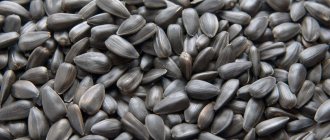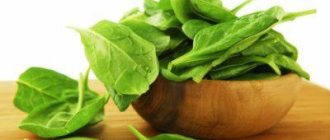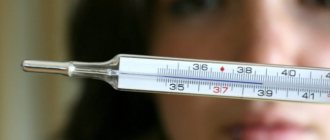I would like to remind you that one of the important components of a proper and healthy diet for a nursing mother is fermented milk products, the benefits of which have long been known to everyone.
Today we propose to talk about whether hard cheese is allowed during breastfeeding and, if so, in what quantity, and what kind, because this question interests many breastfeeding women. Those who are still little informed on this issue want to know which foods can be consumed in their diet and which should be avoided so as not to harm the newborn.
Cheese contains a large amount of calcium, which is so necessary during lactation. But, with unlimited consumption, hard cheese can cause harm, so you need to know the norms for cheese consumption, as well as take a responsible approach to choosing a quality product.
What is real hard cheese? This is a food product that is obtained by coagulating milk with the help of enzymes and lactic acid bacteria. The manufacturing process lasts at least 3 months.
Currently, there is a huge variety of types of hard cheese. Its recipes are being improved and new ones appear every day.
Depending on the manufacturing technology, cheeses can be Swiss, Dutch, Cheddar cheeses, or blue cheeses. They all differ in taste characteristics, as well as composition.
The main ingredients of hard cheeses are milk (various types can be used), fermented milk starter and enzymes for milk coagulation.
Hard cheese has a huge vitamin and mineral complex. It includes vitamins of groups A, B, C, D, E, PP, microelements: calcium, phosphorus, magnesium, iron, potassium, sodium and many others.
The composition of hard cheese and its production technology affect the nutritional properties of the cheese, as well as its calorie content.
The average calorie content of cheese is about 350 kcal / 100 g of product.
How to choose the right hard cheese for a nursing mother
When choosing cheese for a nursing mother, you must follow the following rules:
- You should choose natural cheese,
not a cheese product. It tastes like real cheese, but the technology for its production involves the use of vegetable fats, which significantly reduces its usefulness and can also lead to dysfunction of the baby’s gastrointestinal tract. - Eating hard blue cheese is also not suitable for the lactation period.
The bacteria contained in such cheese can cause upset in the baby, bloating, colic, diarrhea, pain in the stomach and intestines. - It is also advisable to exclude hard smoked cheeses
from the diet, since they contain many harmful additives and dyes. - When purchasing cheese, be sure to pay attention to the production date and shelf life
. Any expired cheese can cause great harm to the body of a nursing mother and her child.
The benefits of eating hard cheese during lactation
Among the main beneficial properties of hard cheese during breastfeeding are:
- The optimal ratio of calcium and phosphorus in the composition of hard cheese allows maximum absorption of calcium by the mother’s body, and through breast milk by the child’s body.
- Has a beneficial effect on the musculoskeletal and skeletal system.
- Helps increase hemoglobin, which is also useful for women in the postpartum period.
- Improves the immunity of a nursing mother and child.
- Normalizes blood pressure levels.
- Helps improve memory.
- It has a beneficial effect on the nervous system, normalizing sleep, helping to cope with headaches and depression.
- Gives the body energy and vigor.
- It has a positive effect on the functioning of the circulatory system, and also helps to normalize a woman’s hormonal levels.
- Contains vitamin D, which is essential for babies, especially in winter.
- Helps normalize the functioning of the gastrointestinal tract.
- Helps improve a woman's natural beauty, positively influencing the condition of hair, nails, teeth, and skin.
- Provides the body with the necessary minerals for the growth and development of the child.
Curd cheeses: harm during lactation
However, curd cheeses can have a harmful effect on both the body of a nursing mother and her child.
The adverse effects of consuming curd cheeses include:
- There is a high sugar content in curd cheeses. This can cause diathesis in a child, a decrease in the functions of the immune system, disruptions in the digestive tract and even caries.
- In addition, bacteria can develop in such a sweet curd environment, especially if production conditions are violated.
- Cocoa is a strong allergen. Using it in curd cheeses can cause allergies in an infant.
- High calorie content. On average it is about 400 kcal / 100 g of product. This can negatively affect the weight of a woman who is not always in ideal shape after childbirth.
- The presence of flavors, dyes and other chemical additives in the curd cheese composition.
- Frequent use of substitutes, vegetable fats, palm oil and other additives in curd cheeses in order to increase the profitability of this product. After all, a natural product is not cheap and has a short shelf life, which makes it potentially unprofitable for manufacturers. Therefore, they include in its composition various milk fat substitutes, the use of which is fraught with diseases of the cardiovascular system.
Harm from eating hard cheese for mother during breastfeeding
All the valuable properties of hard cheese are realized only if it is consumed in moderation. Despite the fact that it is possible to eat hard cheese while breastfeeding, consuming it in excessive quantities can lead to weight gain due to the high content of milk fats.
It is contraindicated during breastfeeding to consume cheeses containing herbs, spices, blue cheeses and smoked cheeses.
All of them have a negative effect on the condition of the infant’s gastrointestinal tract.
Women with serious diseases of the genitourinary system and kidneys should consume hard cheese with caution. You should not include it in your diet if you are allergic to dairy products, although the technology for making hard cheese reduces the likelihood of allergic reactions to a minimum.
Consumption rate for hard cheese for nursing mothers
It is allowed to introduce hard cheese into the diet during breastfeeding from the first month of a child’s life. Start with a small amount, focusing on the baby’s condition.
Hard cheese can be eaten daily during lactation. It should be remembered that the daily consumption rate is no more than 50 g.
Hard cheese during breastfeeding is a healthy and tasty product. It has a beneficial effect on the well-being of a nursing mother and child, and helps normalize the functioning of many basic body functions.
The risk of allergic reactions to hard cheese is minimal, so you can safely try including cheese in a nursing mother’s diet almost immediately after giving birth.
Cheese is an indispensable product that is always present in our refrigerators. Not only is it the main ingredient in healthy and satisfying sandwiches, but it also adds zest to most dishes - salads, casseroles, etc. When can you start eating cheeses while breastfeeding?
Recommended daily allowance for nursing mothers
Even if you receive a positive answer from your pediatrician to the question of whether a nursing mother can eat cheese, you should not abuse this product. It should be introduced into your usual diet gradually, starting with a small piece, but not exceeding the norm of 50 g per day.
https://www.youtube.com/watch?v=3KceL01xtVU
If the baby reacts poorly to this product, for example, with intestinal colic or other disorders, then it is better to replace the cheese with cottage cheese. Its composition is ideal for a nursing mother. You can make desserts from it, add it to salads and use it as a filling for homemade baked goods.
Composition and benefits of cheese
Many mothers doubt whether cheese can be used while breastfeeding, because this product is made from cow's milk, which is known to be allergenic for babies. There is nothing to fear: the peculiarities of the creation technology mean that heavy protein is absorbed much more easily and does not cause any reactions in breastfeeding infants when consumed in moderation.
In terms of the richness of its composition, the cheese is several times superior to its “ancestor” - whole milk. It contains a lot of sodium and potassium, which are necessary for metabolic processes, as well as those involved in the functioning of the nervous and cardiovascular systems. The product contains a lot of other important and rare micro- and macroelements: magnesium and zinc, selenium and iron, calcium and phosphorus. Cheese is also rich in vitamins: its regular consumption will provide the nursing mother’s body with vitamin C, as well as B vitamins, which are very important for the processes of hematopoiesis, and therefore for the lactation process as a whole.
Moderate consumption of cheese while breastfeeding will have a beneficial effect on literally all body systems of the new mother:
- improves digestion;
- normalizes the balance of water in tissues and cells;
- will increase immunity;
- will provide energy;
- normalizes hematopoietic processes.
Including cheese in the diet of a nursing mother will help her during the difficult period of lactation to replenish the reserves of important elements consumed by the body when producing breast milk. But is it possible to introduce this product immediately in the first month?
Who shouldn't eat cheese?
Cheese contains a lot of sodium, but its increased amount can aggravate the following pathologies:
- gastrointestinal ulcers;
- pyelonephritis;
- gastritis;
- urolithiasis;
- hypertension.
Another danger associated with eating cheese concerns soft varieties. They increase appetite, so mothers who want to lose weight or have severe problems with it should not get carried away with such products.
The benefits of cheese for the body
This product is based on cow's or other milk, fermentation of lactic acid bacteria and enzymes.
Different types of cheeses differ slightly in composition, but each of them contains a full range of vitamins (A, B, C, E, PP) and minerals (calcium, magnesium, potassium, sodium, phosphorus, iron, manganese, zinc, copper) . The nutritional value, as well as the calorie content of this product, is high. It has been proven that the protein contained in cheese is absorbed in full, compared to fresh cow's milk. This product is extremely beneficial for the body of pregnant and lactating women. Cheese in the diet is necessary for:
- normalization of digestion;
- improving the outflow of lymphatic fluid;
- restoration of hematopoiesis;
- increasing immunity;
- providing the body with energy;
- improving the condition of skin, nails and hair;
- strengthening the bone skeleton;
- normalization of water-salt balance in the body;
- reducing the risk of developing diabetes.
But, in order not to harm yourself and your baby, before adding this fermented milk product to your menu, you need to find out whether a nursing mother can have cheese. As you know, in the first days after childbirth, a woman’s diet is quite limited, and it is imperative to control it in order to avoid negative consequences.
Is it possible to have cheese while breastfeeding?
When asked whether a nursing mother can eat cheese, breastfeeding specialists answer in the affirmative - it is not only possible, but also necessary to eat every day. The main conditions for successfully introducing it into the diet are choosing a high-quality product of a suitable variety and maintaining healthy moderation when consuming it.
What kind of cheese can a new mother eat? Experts recommend choosing foods with a fat content of no more than 20%. To start introducing cheeses into your diet, it is better to purchase those made from non-allergenic goat milk, for example, Feta. In terms of content and consistency, it is very close to cottage cheese and will be a useful addition to the mother’s main menu.
In the first month, it is recommended to eat young soft cheeses - feta cheese and mozzarella. But gourmet varieties with mold should not be present on a nursing mother’s menu; traces of toxic fungi in breast milk can lead to bloating, rashes and poisoning in the baby.
Let's figure out what types of cheese and when can be introduced into the diet of a new mother.
Durum varieties
Hard cheese is a long-ripening product; the heads last from 4 to 8 months. Swiss, Parmesan, Russian, Kostroma, Cheddar, Dutch - all these are durum varieties with a fat content of 50%.
It is recommended to introduce such products at 4 months, when the baby’s digestive system has stabilized. Cheese with high fat content is difficult to digest, and traces of enzymes in breast milk can cause painful attacks in a baby suffering from colic.
The “heaviness” of hard varieties also determines the recommended restraint when consuming such cheeses. Experts advise nursing mothers not to get carried away and eat no more than 30 grams per day.
Soft varieties
Soft varieties of cheese (Roquefort, Smolensky, Dorogobuzhsky) ripen faster due to the addition of a special bacterial starter to fresh milk. Lactic acid microorganisms coagulate protein, creating in the course of their life a paste-like mass with a pleasant creamy taste.
Soft cheeses have a fat content of 30-40%; this is the product that women with breastfeeding are allowed to eat from the first month. When purchasing a product in a store, you should pay attention to the expiration dates and composition - the ingredients should not contain spicy additives, nuts, mushrooms or pieces of ham.
Processed cheese
The technology for creating processed cheeses is based on heat treatment of hard varieties, during which butter, milk powder and cream are added to the mass. In addition to these ingredients, preservatives, flavors and other additives are introduced into products according to specifications, which are unlikely to benefit the mother and baby during breastfeeding.
Even if you find high-quality processed cheese without a large number of chemical additives, experts do not recommend eating this type of product in the first 3 months. Created from durum varieties with the addition of cream, such products have a high fat content, which will negatively affect the functioning of the digestive system of a newborn.
Smoked
Smoked cheeses (smoked suluguni, sausage, “pigtail” and others) are processed with natural or liquid smoke. This method of production is associated with the accumulation of a large number of chemical or carcinogenic compounds on the surface of the product, therefore it is strictly prohibited for a nursing woman to consume such products.
Smoked products, in addition to dangerous chemical components, contain a large amount of salt. Such food will lead to the accumulation of water in the tissues, and a violation of the water balance, in turn, can cause problems with milk production, which is why you should not eat such foods during lactation.
Salty varieties
Such cheeses are ripened for 1-3 months in salty brine, and only 8% salt accumulates in the mass. The slightly salty heads are easy to break and crumble, and they are prepared from different milks - cow, sheep and goat.
Eating salty varieties during lactation is not prohibited, but it is better for a new mother to choose products that contain less salt. Feta or Adyghe cheese are ideal for feeding during breastfeeding already in the first month, and saltier Suluguni, Ricotta and Brynza can be tried after breast milk production is completely normalized.
How to properly include in the diet during breastfeeding
Like any new product, cheese should be included in your menu gradually. First, it is recommended to try less allergenic products made from goat's milk, and then gradually switch to regular ones made from cow's milk.
- For the first time, you are allowed to try a very small piece (no more than 10 grams), and then observe the baby’s reactions on the skin and gastrointestinal tract for three days. If you eat cheese in the morning before feeding your baby, he may experience colic in the evening, and the next day a rash or diarrhea will appear. If your baby exhibits such food reactions in response to a new item in your diet, it is better to stop experimenting. You will be able to try cheese again during breastfeeding in 3-4 weeks.
- If there are no negative reactions, you can gradually increase the amount of cheese in your diet. The daily intake recommended by experts is 50 grams for low-fat varieties and 30 grams for hard ones.
- When introducing a new variety into your diet, you should also start tasting the cheese in small pieces.
- Use cheese in moderation and consider its volume when preparing all dishes. If you ate 50 grams of cheese for breakfast, you cannot prepare salads or make casseroles with it in the evening.
A nursing mother should be careful when choosing the cheese she eats. It must be of high quality and fresh - only then the product will not harm the health of the baby. Many women prefer to make cheese themselves, so they can be sure that it is made from natural products.
When can you introduce processed cheese into your diet after childbirth?
Most experts advise including a cheese product in the diet once the baby reaches one month of age. It is important to choose a product of good quality, fresh and without additives. Can a nursing mother have processed cheese with different flavors and aromas? Flavorings such as mushrooms, salami and other dangerous synthetic components will only bring harm to a woman and child; such cheese is prohibited from being eaten throughout the entire period of pregnancy.
You need to start using the product with small portions of low fat content. Observing the baby's reaction, you can gradually increase the dosage, but not exceed the maximum permissible values.
Homemade cheese recipes
Store shelves are now full of inexpensive “cheese products,” the taste of which makes you think about the naturalness of its composition. Meanwhile, high-quality cheeses are quite expensive, so many mothers prefer to prepare them at home on their own. The creation technology is quite simple, and the necessary products are almost always at hand.
Homemade cheese
Lightly salted cheese cooks quickly and has a pleasant creamy taste without excessive acidity. It can be spread on croutons or used in salads.
- 3 l. milk;
- 1 tbsp. salt;
- 3 tbsp. vinegar.
The milk is boiled, after which salt and vinegar are added to it. In order for the mixture to curdle well, it should be constantly stirred with a spoon until the curd is visible from the whey. Strain the mixture through cheesecloth, squeeze out the liquid well, and then transfer it to a container under pressure. In 2 hours, homemade cheese will be ready.
The “head” should be stored in a weak brine prepared from boiled water.
Traditional cheese
This product is constantly prepared in villages from leftover milk. The liquid is heated and then placed in a warm place for a couple of days. When the milk has soured significantly, it is filtered through cheesecloth. The resulting mass is tasted; if it is too sour, it can be additionally washed with water and then filtered again.
A dense lump is formed from the curd flakes, which is placed in a container under pressure. As the cheese matures, pinch off pieces and taste until the head reaches the taste you want.
The period of breastfeeding is an important stage in a child’s development, during which he receives all the necessary vitamins and microelements through mother’s milk. In addition, the baby’s digestive system is not yet fully formed, and a nursing mother needs to be especially careful about her diet while breastfeeding. Let's consider whether it is possible to eat cheese while breastfeeding? If yes, which one and in what quantity?
Cheese is a dairy product that is made by adding enzymes and lactic acid bacteria to milk. Beneficial features:
- has a beneficial effect on the functioning of the gastrointestinal tract;
- strengthens the immune system;
- prevents the occurrence of diabetes mellitus;
- with its help, blood cells are formed;
- strengthens the skeleton, nails and hair;
- improves lactation;
- restores water balance.
The amount of vitamins in cheese is several times higher than their content in milk. In addition, cheese is absorbed by the body better than milk in its pure form. Therefore, cheese is an indispensable product in a mother’s diet.
Main components and their properties
- Vitamin A . Responsible for the growth of bones, hair and nails.
- B vitamins (B1, B2, B6, B9, B12). Normalize the functioning of the nervous system and improve metabolism.
- Vitamin C . Strengthens the immune system.
- Vitamin E. Regulates blood circulation.
- Iron . Forms red blood cells, protects the body from bacteria.
- Calcium. With its help, the human skeleton is formed.
- Potassium. Regulates the functioning of the cardiovascular and nervous systems of the body.
- Zinc. Affects the harmonious development of the body.
- Sodium. Normalizes the functioning of the cardiovascular and nervous systems.
- Phosphorus. Improves brain performance and activity.
Homemade cheese is an excellent source of calcium
What beneficial properties do cheeses have?
During pregnancy, a woman spends many of her resources, but even after giving birth while breastfeeding, she continues to spend a fairly large amount of useful substances from her own body. To replenish them, mommy’s diet must include cheese, because this fermented milk product is an excellent source of vitamins and microelements. He contains:
- Zinc promotes the regeneration of skin cells and normal growth of hair and nail plates. In addition, zinc is an excellent helper in the fight against all kinds of viruses and bacteria.
- Calcium, which is responsible for normal blood clotting. It is necessary for the full development of teeth, nails and bone tissue, and is also responsible for the natural excitability of neuromuscular tissue.
- Phosphorus. For the normal condition of muscles and bones, the body must have a sufficient amount of phosphorus.
- Iron, which is an important element for the hematopoietic system.
- Iodine makes an invaluable contribution to the stable functioning of the thyroid gland and is needed for the production of a hormone such as thyroxine.
- Potassium. This element is responsible for ensuring that cells are able to absorb salts needed by the body. Also, potassium, being an anti-allergen, promotes the removal of toxins and clear thinking.
- Selenium. Due to its antioxidant effect, selenium slows down the aging process and strengthens the immune system.
- Vitamins of groups A, B1, B2, B12, C, D, E and PP.
An important advantage of cheeses is the good digestibility of most of the components contained in them, plus the absence of a negative effect on the body of the mother and child. In addition, the proteins that this product is rich in are more acceptable to the body than those contained in regular milk.
Popular varieties
- Solid. They are made by pressing cooked cheese and ripening it for at least 4 months. The fat content of such varieties is more than 50%. Popular durum varieties: “Russian”, “Beaufort” and “Dutch”.
- Smoked. They are made by smoking hard varieties (usually Gouda or Cheddar).
- Fused. It is made on the basis of durum varieties, with the addition of butter and milk powder.
- Soft. Produced by adding bacterial starter cultures to pasteurized milk.
- Brine. Made by soaking and ripening in salty liquid.
- Glazed. They are cottage cheese or curd mass covered with chocolate glaze.
Cheese and breastfeeding
Cheese during breastfeeding is not only not harmful, but also healthy, because it is a storehouse of useful elements necessary for the full development of a small organism. The only thing is that you can eat certain types of cheese and in moderation, gradually introducing them into your diet.
For the first time, start eating cheese with one slice, putting it on a sandwich or adding it to a salad. During the day, look at the condition of the newborn: if he does not have a tummy ache and you do not notice any rashes on the body, it means that the product is normally tolerated by the child’s body. Over time, the dose of the product is increased to 50 grams per day.
If you notice an allergic reaction or severe colic in your child due to a new product, you should discard it and try to introduce it into the diet after a month.
How to use?
You should not eat cheese in its pure form; it is best to prepare salads from it, cook soup based on it, and make sandwiches.
For those with a sweet tooth, using cottage cheese in desserts, pancakes and casseroles is suitable.
In addition, cheese makes excellent snacks, sauces and hot dishes. Experiment, and then the diet for breastfeeding will not seem strict and monotonous to you.
Types of cheeses allowed during lactation
From the second month of breastfeeding, you can add some types of cheese to your diet.
What varieties can you safely eat while breastfeeding?
- Pickled goat or sheep cheese (feta, feta cheese).
- Cottage cheese (preferably low-fat). It can also be given to the baby as complementary food from 8 months.
- Young hard cheeses with a short ripening period (can be added to soup or put on a sandwich).
- Creamy.
- Soft cheeses (for example, “Adygei”).
- Processed cheese. From the second month of the child’s life and in limited quantities, while paying attention to the date of manufacture and the amount of additives and impurities.
These are the main types of cheeses allowed during the Guards. You should avoid eating blue cheese because it contains a large number of fungi. In addition, nursing mothers should be careful when eating glazed varieties, sausage cheese, and cow's milk-based varieties.
When can you start eating cheese? Answer: in the first month of the baby’s life, this product should be abandoned, and from the second month it can be gradually introduced into the mother’s diet.
Contraindications
- People with ulcers or gastritis should not eat cheese.
- Salty varieties are contraindicated during breastfeeding, as they can reduce milk flow.
- You should not consume foods with additives, dyes and flavors during lactation.
- If you have pyelonephritis, you should also avoid eating cheese.
- Urolithiasis is a contraindication to eating cheese.
How to eat?
Typically, cheese is used in the preparation of various cold and hot appetizers and salads. It can be added when preparing hot dishes, soups, sauces. You can also find sweet varieties of this product in desserts.
If a child suddenly has a negative reaction to any type of favorite delicacy, the young mother should not give up all fermented milk products. Cottage cheese can easily replace it during breastfeeding.
Cheese is rarely eaten as an independent dish. As an option, sliced cheese is used on the festive table. A nursing mother should not get carried away with this product. You can add it to any dish, eat a sandwich with cheese. Moreover, it can be not only hard, but also creamy, melted or curd variety. It is better not to eat a variety such as Dor Blue during lactation. This blue cheese can negatively affect your child's well-being.
Homemade cheese recipe
Without a doubt, a dish prepared with your own hands from fresh ingredients will be the healthiest and safest for the health of both mother and child, so let’s consider a recipe for homemade cheese.
Ingredients:
- goat milk – 3l;
- wine vinegar - 3 tbsp. l.;
- table salt – 1 tbsp. l.
Preparation
Pour milk into a saucepan, put it on gas and boil. Add vinegar and salt to it. Stir the milk until it curdles, then remove the pan from the heat.
Strain the mixture through a colander or cheesecloth, drain the whey or use it for baking, and transfer the cottage cheese to another container and place under a press. After 2 hours, the cheese can be eaten. Bon appetit!
How to make cheese at home
An easy and quick variety to prepare at home is Brynza. In addition, this type is not contraindicated during breastfeeding. We offer a traditional recipe for Brynza without adding spices and herbs, which are harmful to the still fragile body of a newborn. Take:
- Cow's or goat's milk with the lowest fat content - 3 liters;
- Natural, apple or wine vinegar - 3 tbsp. spoons;
- Salt – 1 tbsp. spoon.
Bring the milk to a boil, add vinegar and salt. Stir the mixture with a spoon until the salt has dissolved and the milk has curdled. The result is curd mass and whey. Drain off the whey, place the curd mass in a colander with cheesecloth and strain to remove any remaining whey. Place the cottage cheese under pressure (press) and leave for 1-2 hours. After which you can eat the cheese right away.
As a result, you will get cheese that is not too salty and not too sour, which is suitable for a nursing mother and baby. Store cheese in boiled, salted water. This type of cheese can be used to prepare a Greek salad with olive oil dressing.
Summary
The diet of a nursing mother should be healthy, varied and nutritious, so you can eat everything, but in small quantities. As for cheese, nursing mothers should definitely eat it, because it contains a large amount of calcium, which is so necessary for the growth and development of the child’s bones.
Today you can find such a variety of cheeses on store shelves that it’s difficult to resist buying them. Smoked, hard, soft, melted, curd varieties of the product will not leave anyone indifferent. But a nursing mother needs to make wise choices so that her nutrition does not harm her baby. Is cheese good for breastfeeding? Which varieties should you prefer and which ones should you avoid?
Composition and beneficial properties of cheese
Cheese contains many vitamins and microelements. In addition to its rich composition, cheese contains easily digestible milk protein, which is an excellent building material for the body. Milk protein often causes allergies in young children, since the body does not yet have the enzymes to digest it until the age of three. But in the case of cheese, the risk of allergy is low, since coagulated milk protein is much easier to digest and less likely to cause negative reactions.
Can a nursing mother have cheese? Yes, you can! This product will be very useful during breastfeeding not only for the woman, but also for the baby, since vitamins and minerals penetrate into breast milk. The main thing is to learn how to choose the right varieties that are safe for a newborn.
Vitamins and minerals that make up cheese and their effect on the body
Which cheese to choose when breastfeeding
Different types of cheese differ significantly not only in taste, but also in preparation technology. Cheese is useful for a nursing mother, but not all varieties can be eaten during breastfeeding.
Hard (rennet) cheeses take a long time to ripen after boiling and pressing (about 8 months). Their distinctive feature is high fat content (50% or more). This product is tasty and has many beneficial properties, but its high calorie content and high fat content make it a rather dangerous component of my mother’s menu. You can eat hard cheese while breastfeeding, but the amount should be strictly limited - no more than 30 g per day. Names of hard rennet varieties: Russian, Parmesan, Cheddar, etc.
Processed varieties are made from hard cheeses using heat treatment and adding butter, cream and milk powder. This type of product is suitable for sandwiches and preparing various dishes (for example, cheese soup). In GW, such cheese is not very useful, as it contains various additives in the form of flavorings and preservatives. It is unknown how the baby will react to such a “chemical bouquet” in the product, so it is better to avoid purchasing this type of cheese. Names of melted varieties: Hochland, Omichka, President, Druzhba, etc.
Without fear, you can eat soft varieties of cheeses on GW, which are also rennet, but do not require long ripening. They are made from natural cow's milk with the addition of lactic acid bacteria (ferment). This product has a mild taste, pleasant texture and does not contain much fat (on average about 30-40%). The only exceptions can be cheeses with additives (mold, spicy seasonings, ham, nuts, etc.).
Blue cheese should not be eaten by a nursing mother, since this additive, although approved and approved by specialists, often causes allergies. Spicy seasonings can change the taste of milk for the worse. Ham and nuts increase the calorie content of the product and are also sources of risk of allergic reactions. Names of soft varieties: Roquefort, Smolensky, Camembert.
If your child is allergic to cow's milk protein, you can try pickled cheeses made from sheep's or goat's milk. There is a high probability that the child’s body will not give a negative reaction to these types of milk proteins
Brine varieties of cheese can also be eaten on the GW without fear, but choose a variety that uses less salt (for example, Adyghe). The variety is called brined because its preparation uses brine in which the cheese is aged. This product has a delicate crumbly consistency and a pleasant creamy taste. Also brine varieties include Feta, Brynza, Ricotta, Suluguni.
Another popular type of cheese is smoked. This includes smoked suluguni, “Kosichka”, sausage and other cheeses that are treated with natural or liquid smoke during the preparation process. During breastfeeding, such cheeses are strictly contraindicated, because low-quality raw materials are often used in production, and chemical flavors and dyes are used for processing. In addition, the strong taste of smoke can negatively affect breast milk. Another negative point is a large amount of salt. Salty foods in the diet of a nursing woman are undesirable, as they disrupt the water balance in the body, and this has a bad effect on lactation. Therefore, mommy should think carefully before buying a tasty but unhealthy “pigtail”.
Which varieties to avoid?
We suggest you read: Is it possible to eat processed cheese while breastfeeding?
And one more question is often asked to doctors by nursing mothers: “Can Adyghe cheese be used during lactation?” The answer will be yes. This soft cheese, which does not require ripening and has a cheesy consistency, is very useful for women during lactation. It can be consumed alone or added to salads and other dishes.
Many people are interested in whether a nursing mother can have cheese with various additives, smoked or made using cultures of special fungi. Doctors and nutritionists are critical of gourmet foods and so-called cheese products.
Processed cheeses often contain palm fat, milk powder, thickeners, emulsifiers and other additives. It is impossible to call them completely natural, just as it is impossible to predict the consequences of use. Smoking provokes the accumulation of aromatic compounds, carcinogens and harmful resins in the product.
Undesirable varieties for use during lactation include:
Blue cheese during breastfeeding turns out to be toxic and can lead to serious digestive problems in the baby. Penicillin compounds in the product have a detrimental effect on vulnerable intestinal microflora. The pungent aroma of such cheeses, penetrating into milk, can provoke breast refusal.
How to properly introduce cheese into a nursing mother's diet
If everything is now clear with the types of cheese and mommy won’t make a mistake when purchasing, then all that remains is to find out how to correctly include the product in the menu in order to minimize the risk for the baby.
- In the first month of a child’s life, young soft or pickled cheeses without additives and with a fat content of up to 30% can be introduced into the diet.
- You can start trying hard cheese from 2-3 months of your baby’s life.
- In any case, the amount of product per day should be small - no more than 30-50 g.
- Cheese is a dairy product, so allergies cannot be ruled out. For the first time, you can eat a small piece of cheese for breakfast and watch your baby throughout the day. If there is no negative reaction, the dose can be gradually increased.
- If allergic reactions are suspected, the child is given an antihistamine, and cheese is excluded from the mother’s menu for several months.
- As an alternative to processed varieties, you can use curd cheese for sandwiches. Yes, the taste and consistency are completely different, but there will be more benefits from such a product.
- When breastfeeding, you need to remember the golden rule that any product is beneficial only when consumed in moderation. Therefore, it is better to use cheese as an addition to dishes (for example, decorating a salad or macaroni and cheese). It is not worth eating as an independent dish, since the quantity increases sharply with this method of consumption.
- When purchasing, it is very important to pay attention to expiration dates.
- If possible, it is better to prepare cheeses yourself from milk and low-fat cottage cheese. On the Internet you can find a lot of simple recipes made from affordable, inexpensive products.
Recommendations for use during lactation
How to enter it into the menu correctly?
- Be sure to choose only fresh and high-quality products.
- Check the introduction of cheese into your diet for your child’s allergic reaction. At the slightest sign of an allergy, stop using it. After some time, you can carefully try using cheese in your menu again.
- In the first month after giving birth, eat only pickled or soft young varieties. Fat content should be no more than 30%.
- When your baby is one month old, you can start trying hard cheeses.
- As an option, you can use curd cheeses - they are much more beneficial.
- You need to start with a small portion - 30-50 grams of product per day will be enough for a young mother.
- Under no circumstances use varieties with mold, smoked or melted. Also exclude cheeses with additives, such as mushrooms, nuts or spices. All this can cause severe allergies in the baby.
- It is best to use homemade cheese. You can buy it at the market or prepare it yourself, which is preferable. This way you will know what ingredients are used and how the product is prepared, and it will also be fresh.
- Use cheeses in combination with other products - meat, vegetables, pasta. It should not be consumed as an independent dish.
Contraindications for eating cheese
Not only allergic reactions can be a contraindication to eating cheese. Due to the high sodium content, this product should not be abused by people with the following ailments:
- Ulcerative diseases.
- Pyelonephritis.
- Gastritis.
- Hypertension.
- Urolithiasis disease.
Overweight mothers should avoid soft varieties of cheese, as they are more likely to increase appetite than hard varieties. Pickled cheeses can cause dry mouth, but this effect only occurs when consumed in excess.
While breastfeeding, you don’t need to deny yourself such a tasty and nutritious product as cheese. The main thing is to treat portions wisely and choose the right varieties. With this approach, neither the baby nor the mother is in danger!
As you know, some healthy foods during breastfeeding can cause harm to the newborn, causing colic or allergies.
That is why many young mothers are interested in whether it is possible to include mozzarella cheese in their diet while breastfeeding or is it potentially dangerous for the baby’s fragile body? In this article we will talk about the beneficial properties of this tasty product, and also figure out whether nursing mothers can include it in their diet and, if so, when exactly.
Mozzarella cheese is one of the hallmarks of Italy. Today it is one of the most widespread varieties of cheese, both in its homeland and abroad. This product has gained such wide popularity not only because of its delicate, unique taste, but also because of its beneficial properties.
It should be noted that traditional mozzarella is made from buffalo milk. Of course, the price of such a product is very high, and therefore the vast majority of mozzarella is made from cow's milk.
The benefits of mozzarella are determined by its high content:
- Phosphorus;
- Calcium;
- Yoda;
- Amino acids;
- Vitamins of groups A, E and D;
- Omega-3 essential fatty acids;
- Copper.
Due to its high content of vitamins and microelements, mozzarella promotes:
- Improving the functioning of the immune system
. It is generally accepted that eating one ball of mozzarella per day can fully satisfy the body’s daily need for microelements and vitamins. This property will be incredibly useful for women, both during pregnancy and after childbirth. - Strengthening the musculoskeletal system
. As you know, calcium and phosphorus are necessary for the development and strengthening of bones. Due to the high content of these microelements, mozzarella is incredibly beneficial for a growing body. - Strengthening the nervous system
. Fatty acids and vitamin A have a beneficial effect on the nervous system. Mozzarella helps get rid of depression, overcome blues and improve sleep. - Improving teeth
. Calcium, which is contained in mozzarella, can improve the condition of teeth. The introduction of this type of cheese into the diet is necessary for women whose enamel has been depleted during pregnancy.
It should be noted that mozzarella is very easily digestible. Thanks to this property, all useful elements are completely absorbed by the body.
Of course, all useful elements are contained only in real mozzarella - fresh brine cheese. Today in stores you can find hard cheese with the same name, but it has nothing to do with real mozzarella. This applies to both taste and its properties.
Possible harm and contraindications
During pregnancy and breastfeeding, the resources of the female body are depleted. No wonder, because a child, in the process of growth and development, takes many microelements and vitamins from his mother. And first of all, calcium, which forms the bone skeleton and tooth enamel. Therefore, a woman must constantly maintain a vitamin and mineral balance, otherwise goodbye to healthy teeth, beautiful hair and nails.
The benefits of cheese on a nursing mother's menu are undeniable, because it contains so much calcium and other essential microelements.
Sheep cheese is especially rich in minerals and vitamins, the benefit of which lies in the maximum content of calcium, potassium, and phosphorus. It contains linoleic acid, which is very necessary for the body, which reduces the risk of cancer cell formation and prevents the development of atherosclerosis.
In addition, this product contains protein, which is easily absorbed by the child’s body, is completely absorbed and does not have a negative effect on digestion. The baby's tummy is in perfect order.
You can sing the praises of cheese indefinitely:
- Improves digestion and gastrointestinal function;
- Improves hematopoiesis as it contains iron;
- Strengthens the immune system;
- Reduces the likelihood of developing diabetes or contracting tuberculosis;
- Strengthens bones, nails, hair and ensures their rapid growth;
- It promotes the production of endorphins no worse than chocolate, that is, it improves mood.
But despite its undeniable advantages, you can’t overeat it, because there is still a fly in the ointment.
- It contains sodium, and some varieties are even cooked in brine, so women with bladder and kidney problems need to eat it little by little, because it can cause urolithiasis.
- It also contains tryptophan. This amino acid causes migraines and sleep disorders.
- Many varieties contain unhealthy artificial preservatives.
- And the most important thing (for any woman) is that excessive consumption leads to excess weight.
You can and should eat cheese, but not more than 50 grams per day.
Eating cheese changes the composition of breast milk. It is not only enriched with calcium and other mineral elements and vitamins, but also becomes too fatty, which can cause intestinal colic in the child and stool upset. Also, cheeses with various additives (spices, mushrooms) are not recommended for nursing mothers. They can provoke allergic reactions on the skin.
Cheeses should not be included in the diet of women with a history of kidney and urinary tract diseases. This is due to the fact that literally all varieties of this product contain sodium salts, which lead to the formation of stones.
Possible harm of mozzarella during breastfeeding
Despite the high content of useful substances, mozzarella cheese is not an absolutely safe product.
Mozzarella is contraindicated for:
- Peptic ulcer;
- Chronic glomerulonephritis;
- Hypertension;
- Tendency to swelling;
- Kidney failure;
- Individual intolerance to milk protein.
In addition, mozzarella has a mild laxative effect. In another case, this property could be included in the list of useful ones, but when breastfeeding, mozzarella can cause digestive upset in a child.
That is why you should be very careful when introducing this type of cheese into your diet while breastfeeding.
How to add mozzarella to your diet during lactation
Mozzarella belongs to the group of cheeses that can be introduced into the diet in the first month. However, this must be done extremely carefully:
- You need to start with a very small portion - no more than 25 g.
- On the day of the first introduction of cheese, you should not eat other foods new to the baby.
- Watch your child's reaction carefully. If a rash or eating disorder occurs, delay introducing mozzarella for at least a month.
- The maximum daily portion of mozzarella is 50 g.
- Mozzarella should not be combined with meat. This combination prevents the absorption of many beneficial substances and provokes eating disorders.
Be careful when choosing your cheese.
Mozzarella belongs to the group of fresh cheeses, the shelf life of which is limited to 2-3 days. Old mozzarella can cause serious food poisoning.
If your child reacts negatively to a new product, do not despair. Firstly, the reaction to mozzarella cheese during breastfeeding may change after some time, and secondly, this cheese can be replaced with cottage cheese in many dishes.










